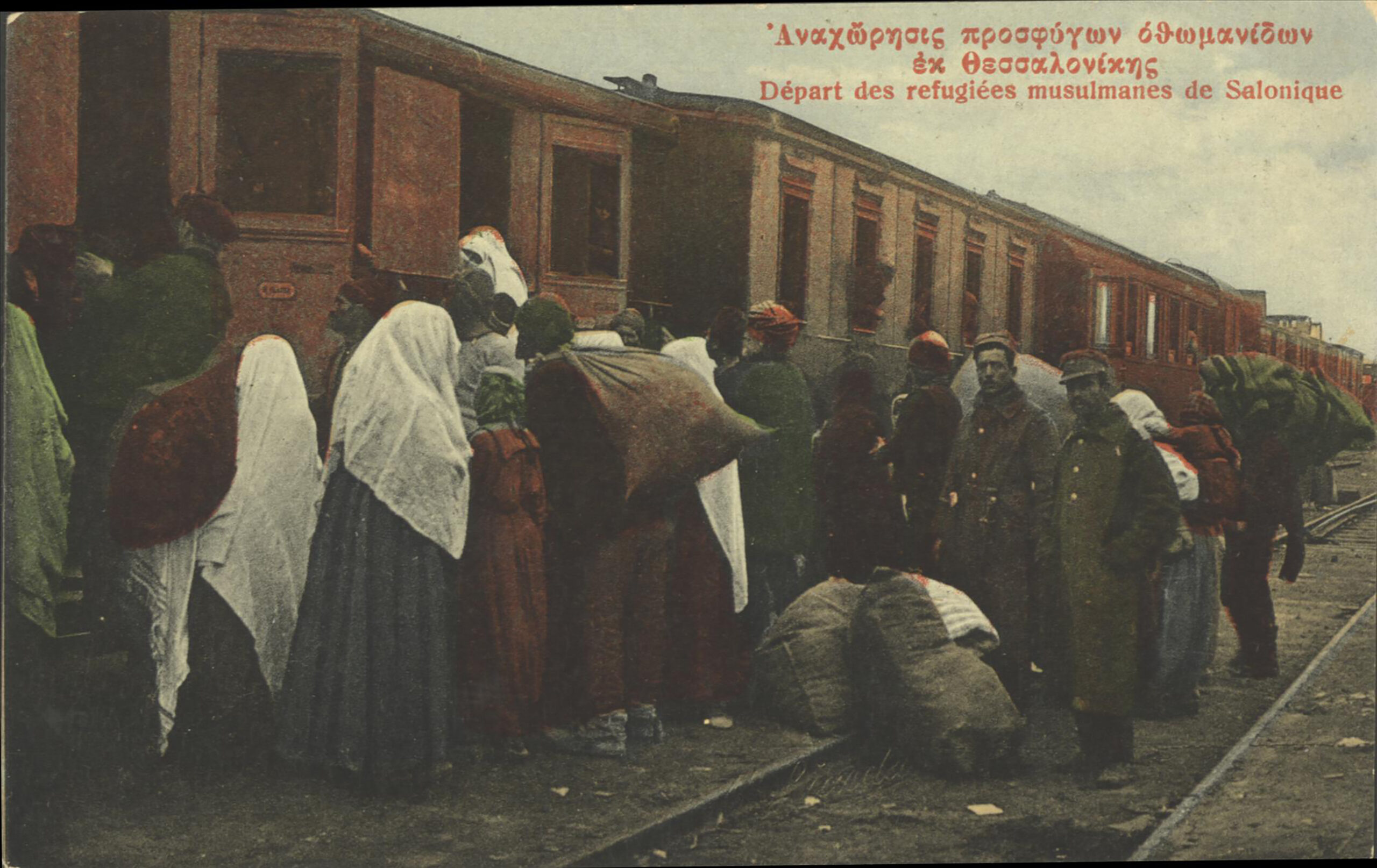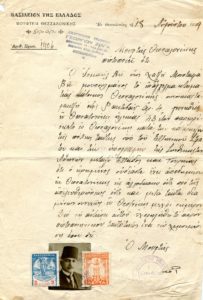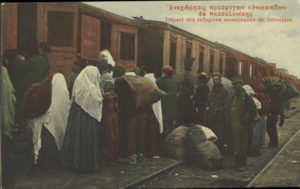Ishmail Vei: a native of Thessaloniki
City
Migration Period
City Narratives
Category
Full Description
On August 18, 1919, the Mufti of Thessaloniki issued a certificate affirming that the land owner Ishmail Vei, resident of Taraktzi neighbourhood who lived on 4 Raktivan Street and was 43 years of age, ‘was present in Thessaloniki during its takeover by the Greek army and the signing of the Treaty of Athens between Greece and Turkey’ and that ‘the aforementioned has never migrated from Thessaloniki to another country, neither prior to its liberation nor after, and has been a resident of the city continuously until today’. According to the document, Ishmail Vei had lived his whole life in Thessaloniki, but we can’t know why Ishmail Vei might have needed this certificate of permanent residence.
What we do know is that thousands of Muslims in Thessaloniki, Macedonia and the Balkans, like the women depicted in the postcard, left their homes in the 1910s and moved to Ottoman Empire territories. For many of these people, Thessaloniki became a transit stop on their journey. [1]
Five years after this certificate was issued, Ishmail Vei of Thessaloniki was probably forced to leave his native city along with the vast majority of Thessaloniki’s Muslims. The only exceptions were Muslims who could prove they were not Turkish nationals, such as Albanian or Serbian Muslims. Many Thessaloniki Muslims attempted to avoid the exchange, with several wealthy land owners and members of the Dönme community among them.
The expatriation of the Muslim communities of Thessaloniki and northern Greece had been completed by the end of 1924, mainly via the ports of Thessaloniki and Kavala. The process was supervised by a committee composed of Turkish, Greek and neutral observers and the ships carrying out the transport were mainly Turkish. The Muslims departed in a much more organised way compared to the Christians of Asia Minor and Pontus and were even allowed to carry part of their mobile assets with them. Many Muslims tried to sell their property before leaving and many Greeks tried to acquire it, resulting in scores of contracts and transactions, a large number of which were later declared illegal by the Greek administrative authorities, as the immobile assets of the Greek Muslims had been deemed exchangeable property according to the Lausanne Treaty and the newly-arrived refugees were actively asserting their claim to them.
[1] The number of Muslims who left Greek territories between 1913 and 1915 varies depending on the source. Greek sources mention that they were 75,000, while Turkish sources raise the number to 220,000 people.
Bibliography
Bruce Clark, Twice a stranger. How mass expulsion forged modern Greece and Turkey, Harvard University Press, Harvard 2006.


